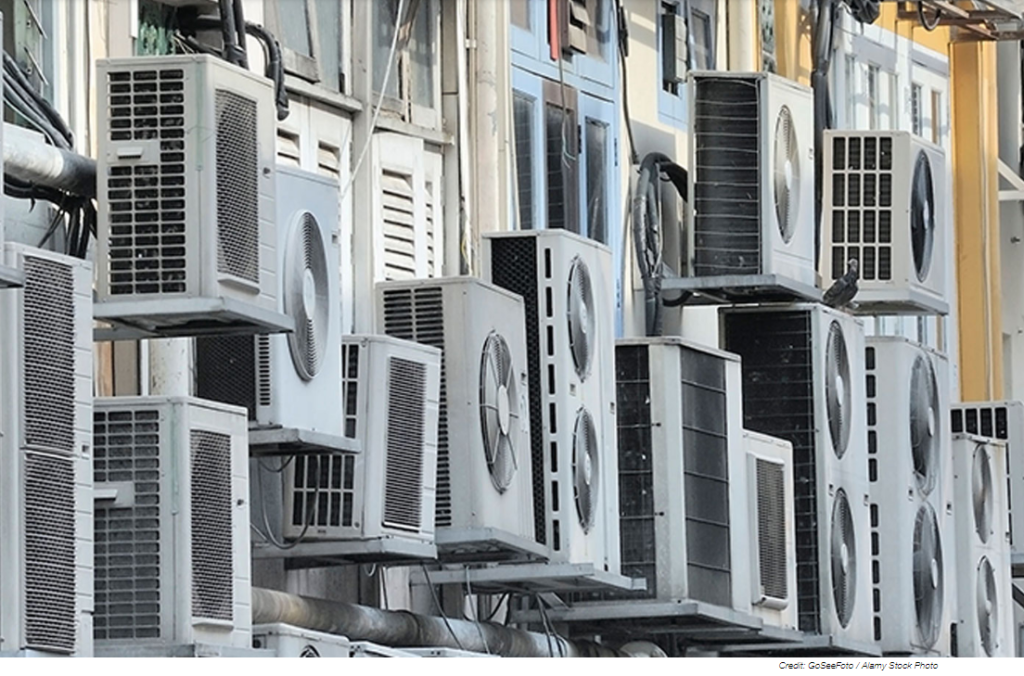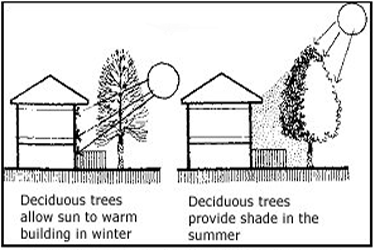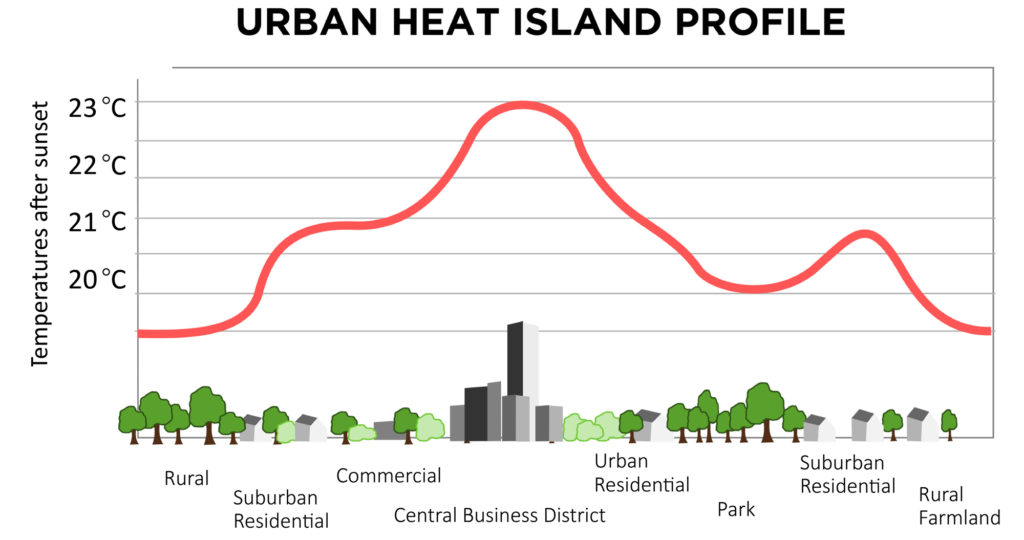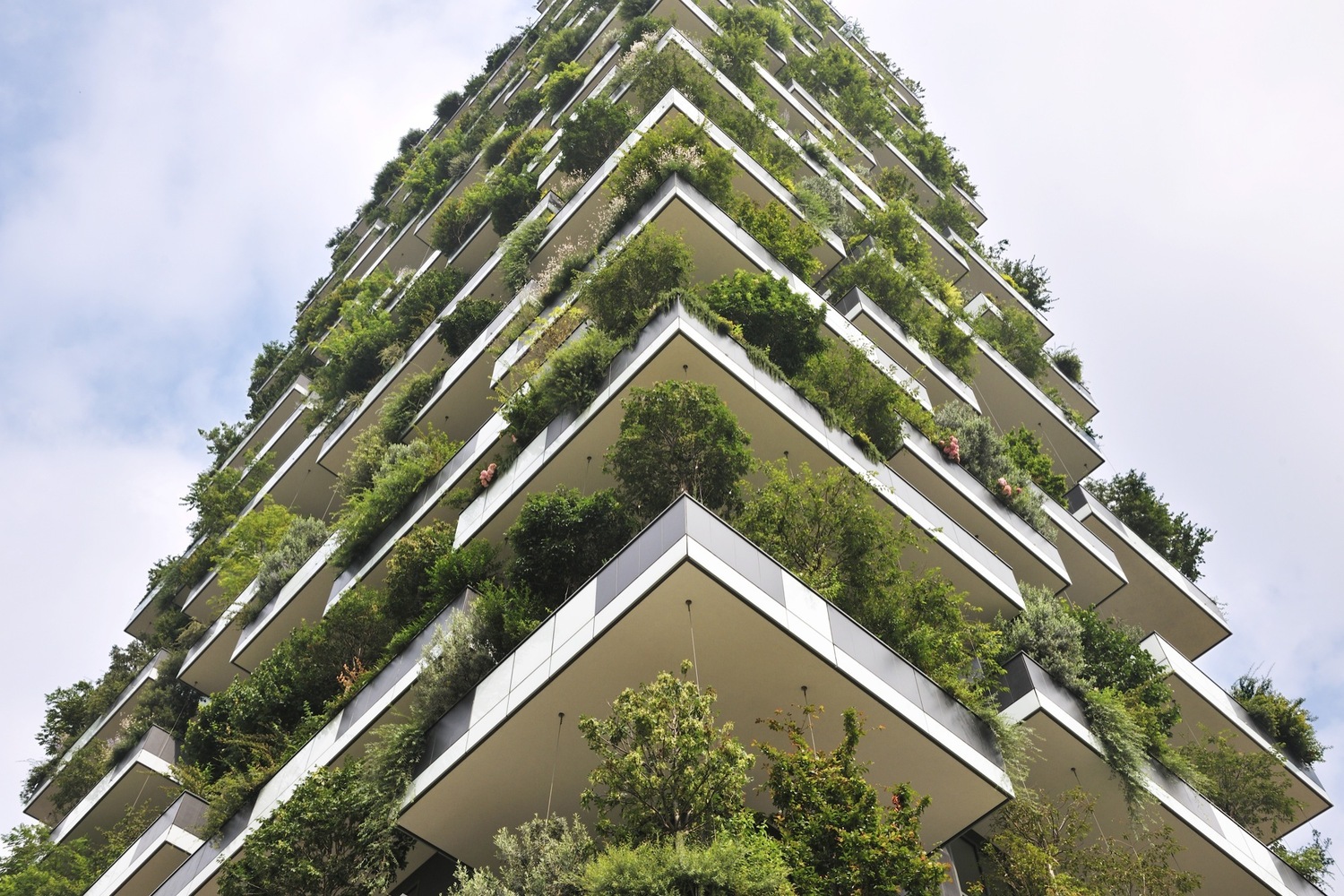This is the second in an ongoing series illustrating the relationship of Drawdown strategies to landscape architecture. For context, read the initial post here.
Yes, I’m here today to talk about Refrigerant Management. I do this for a couple of reasons. First, it is important in terms of Drawdown, as this is, by far, the most significant strategy included in their collection to reverse global warming. Of the 80 strategies collected, it is the #1 ranked solution and has the capacity to could contribute to 89.74 gigatons of CO2 reductions by 2050. Via their site, you can read more about the specifics of the shift away from ozone-depleting CFCs (chlorofluorocarbons) and HCFCs (hydrochlorofluorocarbons) in the 1980s and 1990s, and how that did wonders for the ozone layer. Their ‘greener’ replacement HFCs (hydroflurocarbons), still have significant impacts related to climate change, with “1,000 to 9,000 times greater capacity to warm the atmosphere than carbon dioxide”. By reducing the use of HFCs and transitioning to other ‘natural’ refrigerant options like propane and ammonium, there can be huge reductions, and by implemented better disposal options, the overall impacts, thus the #1 ranking, are significant. The cost to do this is not insignificant, but the benefits are worth investing in new options can yield major climate benefits.

That’s impressive. However, you may ask, “What does that have to do with landscape architecture?”. Which, brings me to my second point, which is to illustrate why taking a step back from the literal strategies in Drawdown allows some much needed perspective on an expanded role in landscape architecture in climate change. So yes, landscape architecture doesn’t have much say in the specific products used for refrigeration, and although we collaborate with architects and engineers on buildings, our purview rarely if every goes into the specific refrigerant types. What we DO have is the ability to think more critically about the root of the issue, and look at ways we can use site design, orientation, and vegetation, with a focus on micro-climate, to eliminate and/or significantly reduce the amount of refrigerants needed in the first place.
I’ve mentioned previously that it is important to use appropriate climate change terminology, specifically as we talk about our role. At a fundamental level, we must articulate the key difference in how we design for adaptation (moderating effects) and mitigation (reducing emissions). The strategies in Drawdown are specifically focused on the latter, with reductions in CO2 the main metric. Within landscape architecture mitigation strategies, it is important also to make the distinction between direct mitigation, which involves use of materials, like plants, to capture CO2 and indirect mitigation, which employs strategies that yield efficiencies in other systems, like heating and cooling, that reduce CO2 and thus directly reduce GHG emissions and global warming.
Every landscape architecture (and hopefully architecture) student encounters some form of this simple diagram (in this case from the Whole Building Design Guide), in one of their intro classes. It showing the powerful shading potential of a deciduous tree, which in full foliage, when placed on the aspect of building hat receives maximum summer sun
(here in the Northern Hemisphere that’s the south, with some benefit both east and west also) can provide shade that helps cool down the interior temperatures, which reduces the demand on cooling. Conversely, that same deciduous tree, when leaves fall off in summer months, allows the lower winter sun to penetrate the interior, warming the spaces and reducing the need for winter heating.

Although simple in nature, if employed in tandem with proper site planning, architectural form, canopies, smart glass, and other detailing,
the effect of this is powerful. Another, more intricate but no less powerful example of this is the use of green screens, using vines and trailing plants to provide the similar micro-climatic cooling effects as tree canopies, and are more adaptable to smaller areas by taking up a smaller footprint, or in some cases, potentially can be affixed to the sides of buildings where it doesn’t need any ground at all. The general idea is the same, using a mixture of evergreen and/or deciduous species that allow the same shading/sun impacts seasonally.

Another less common option is to locate evergreen vegetation strategically to block winter winds, such as the north sides of buildings here in the Pacific Northwest. When you drill down more, there are a number of considerations, and it does have more or less impact where the building is located geographically. For instance, you can eliminate heating and cooling potentially in some cases in more temperate climates, whereas hotter and colder climates you may only be able to reduce, but not eliminate these impacts. But the takeaway is, micro-climate design coupled with plantings is a simple and effective strategy that can reduce heating and cooling needs, which has positive benefits of less energy, and also less refrigerant use – and can provide benefits, anywhere in the world.
The result, of course, in this context, is less need for refrigerants, and a direct link between landscape architecture and our ability to contribute to the top strategy that Drawdown has identified in reversing global warming.
Less use of refrigerants should accelerate the change-over from older uses of HFCs, and additional benefits like energy use reductions (the power . Plus, those trees are also capturing CO2. Win, win, win.
Pretty impressive? How about even another win in relation to refrigerant management. By thinking bigger and looking at reducing city and district-scale urban heat islands, we may have even greater impacts on both energy efficiency and reductions of refrigerants. Urban Heat Island effect is defined by the as “The tendency for higher air temperatures to persist in urban areas as a result of heat absorbed and emitted by buildings and asphalt, tending to make cities warmer than the surrounding countryside.” (NCA4 – Glossary).

According to both the Fourth National Climate Assessment (NCA4), this effect is expected to get worse with growing climate change, and in the IPCC Special Report, urban heat islands “…amplify the impacts of heatwaves in cities.” (Section B.5.2) The cumulative effect is for cities and buildings to use more air conditioning, which uses more energy and more refrigerants. By planting more trees, creating more open spaces, and developing more green roofs, we do the opposite, by amplifying the cooling potential and aiding in reducing that urban heat gain. As mentioned in the IPCC Special Report – Summary for Urban Policymakers, “Improvement of green urban infrastructure with increased use of nature-based solutions could reduce flood and drought, enable water conservation, and reduce urban heat island effects.” (16) The net benefit in aiding in Drawdown strategy #1, is that this reduced urban heat island effect has, along with the other residual co-benefits to people, nature, and economies, along with energy reduction, it has, yes, a direct impact on reducing refrigerants.

While you could claim that indirect mitigation is equivalent to ‘adaptation’, because you are moderating effects in addition to reducing GHG emissions, the answer would be yes! This is some of the brilliance of many landscape solutions, because they have compound benefits of both mitigation through direct and indirect means, as well as adaptation benefits, such as better thermal comfort, uptake of air pollution and particulates, connections to nature, habitat, and much more.
This is not meant to be a deep dive, but rather to illustrate a key point related to Drawdown – that what at first may seem to be a strategy that isn’t really relevant to the practice of landscape architecture, may prove to have a range of diverse, multi-benefit solutions that can directly help reverse global warming. In this case, the #1 potential opportunity for CO2 reduction identified is that all-so-obscure topic everyone’s chatting about — refrigerant management. On the surface it seems pretty obscure, but with a bit of analysis, it’s pretty easy to see how landscape architecture, working in tandem with the full design team of architects and engineers, can employ these passive shading strategies using trees, green walls, and other methods to reduce energy demand and thus reduce refrigerant use. Furthermore, larger urban greening with forests, trees, open spaces, and green roofs, all work in tandem to reduce urban heat island impacts, which can cool temperatures and also significantly reduce refrigerants and the cost to convert old technologies to new, less polluting options.
I’m working on compiling the evidence to support these co-benefits in all aspects, of which there’s a vast amount of supporting data. If you know of a good study related to this, shoot me a link, as I envision being able to calculate and quantify the contributions. Stay tuned tomorrow for more.
HEADER: Bosco Verticale by Boeri Studio – via Arch Daily

One thought on “Daily Drawdown 2: Refrigerant Management”